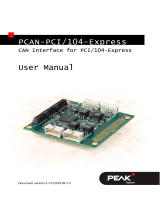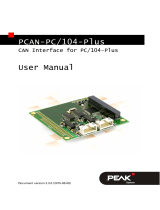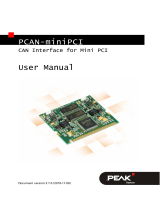
PCAN-TJA1054 – User Manual
8
3 Operation
3.1 Bit Rate
Make sure that the bit rate of the connected HS-CAN component
matches the bit rate of the LS-CAN bus for operating the PCAN-
TJA1054. No conversion or automatic adaptation of the bit rate is
done in the PCAN-TJA1054.
3.2 Low Power Modes
Note: The LS-CAN transceiver always works with the normal
operation mode. The operation in one of the low-power modes
"Sleep" or "Standby" is not possible.
Because the PCAN-TJA1054 is connected to further hardware
(controllers, for example) only through the CAN bus, it is not
capable of activating one of the low-power modes.
If the PCAN-TJA1054 shall be connected to the LS-CAN bus of a
motor vehicle, that uses a low-power mode, the following should be
considered:
In a low-power mode all transceivers in a motor vehicle terminate
CAN_L against the battery. However, the PCAN-TJA1054 still
terminates CAN_L against V
CC
. On CAN_L the voltage adjusts to a
level above or below the recognition threshold for short circuits on
CAN_L (7.3 V) depending on the network size and termination.
If the voltage on CAN_L stays below 7.3 V, a shunt current leads to
an increased current consumption in the motor vehicle.




















